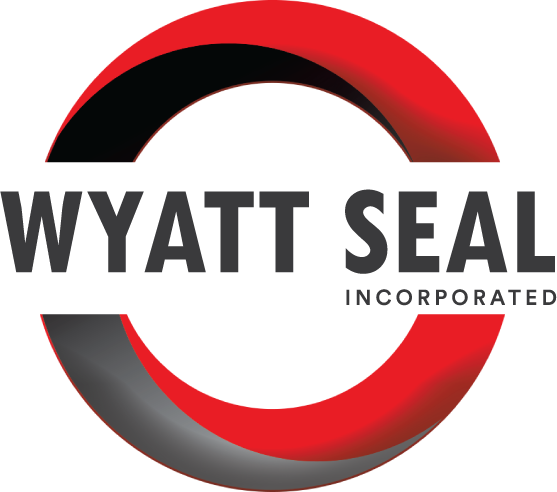Need some assistance?
- Overview
-
By Type
Custom - Standard (AS568)
-
By Brand
Parker - Freudenberg
-
By Material
Nitrile - FKM
- EPDM
- FFKM
- Silicone
- Fluorosilicone
- PTFE
- Polyurethane
- FEP/PFA Encapsulated
- HNBR
- Overview
-
By Type
U-Cups - Wipers
- Wear Rings
- Overview
-
By Brand
Simmerring®
Need some assistance?
Need some assistance?
-
O-RINGS
- Overview
-
By Type
Custom - Standard (AS568)
-
By Brand
Parker - Freudenberg
-
By Material
Nitrile - FKM
- EPDM
- FFKM
- Silicone
- Fluorosilicone
- PTFE
- Polyurethane
- FEP/PFA Encapsulated
- HNBR
-
HYDRAULICS & PNEUMATICS
- Overview
-
By Type
U-Cups - Wipers
- Wear Rings
-
ROTARY SEALS
- Overview
-
By Brand
Simmerring®
- CUSTOM MOLDED
- GASKETS
- MACHINED RUBBER & PLASTICS
- EXTRUDED SHAPES & PROFILES
- SPECIALTY PRODUCTS
Nitrile O-rings
Nitrile, commonly abbreviated as NBR or Buna-N, is one of the most common materials used in the industry today. It is a rubber compound that maintains a low cost while withstanding water, oils, lubricants, and some fuels, as well as an extensive temperature range.
Nitrile is a synthetic copolymer of acrylonitrile and butadiene. Different properties can be observed by changing the acrylonitrile content in the formulation, ranging from 18% to 50%. Higher acrylonitrile content will cause higher oil and fuel resistance but lower temperature flexibility and compression set. Conversely, a lower acrylonitrile content will reduce the oil and fuel resistance but cause an increase in temperature flexibility and compression set. An acrylonitrile content of 32% is considered standard.
Used mainly in pneumatics, hydraulics, and fuel systems, nitrile O-rings have many variations, including hydrogenated nitrile (HNBR). To work correctly, all nitrile O-rings must be lubricated based on the application and formulation, generally a form of oil, fuel, or water.
Features and Specifications
Temperature Range
Standard nitrile O-ring temperature ranges are from - 30ºF to 250ºF. However, different formulations can allow for lower or higher temperature ranges. These temperatures are based on dry air; the actual temperature range depends on end-use application and will vary.
Hydrogenated nitrile O-rings (HNBR) are another option when looking for a sealing solution in higher temperatures or with use in harsher environments. HNBR O-ring temperatures usually range from- 23ºF to 300ºF. In addition, HNBR is more resistant to oils and fuels, ozone, heat, and some harsh chemicals.
Durometer
Standard durometer (hardness) can range from 40 Shore A to 90 Shore A, with the standard typically being 70 durometer.
Color
Nitrile O-rings are most commonly black in color. However, they can be made in alternative colors for applications where high visibility is needed.
Benefits of Nitrile O-rings
Nitrile O-rings offer excellent resistance to oils, fuels, and other petroleum-based fluids, making them ideal for sealing applications in automotive and industrial environments. Known for their durability, they provide reliable performance across a wide temperature range, ensuring long-lasting seals in both hot and cold conditions. They are cost-effective and versatile, making them a popular choice for various sealing applications due to their balance of affordability, chemical resistance, and mechanical strength. They offer many advantageous mechanical properties, including:
- Chemical resistance
- Flexibility
- Low compression set
- Low electrical conductivity
- Tensile strength and tear resistance
Additionally, nitrile O-rings are resistant to:
- Abrasion
- Grease
- Mold
- Silicone oils
- Water
Common Uses and Applications of Nitrile O-rings
As one of the most common seals used in the industry, nitrile O-rings are suitable for various static and dynamic applications, are easy to produce even at the specialty level, and are cost-effective. The most common uses of nitrile O-rings are in hydraulics, pneumatics, and fuel, generally in automotive equipment, off-road equipment, some military applications, marine devices, and aircraft fuel systems. Additional industries which utilize nitrile O-rings include:
- Aerospace
- Automotive
- Electrical
- Energy
- Food and beverage
- Hydraulics
- Marine devices
- Medical and pharmaceutical devices
- Military applications
- Oil and gas
- Pneumatics
- Waterproofing
The wyatt seal advantage
We're here to help in selecting the right sealing solution. Tell us your specifications, and we'll partner with you to find the ideal O-rings for your next project. Contact Wyatt Seal to find out more about our O-ring selection and custom solutions.

